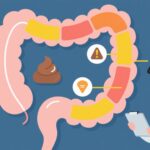Introduction: The moment before the storm
When people talk about stroke, the image is often dramatic: sudden paralysis, drooping face, words that fall away. But many survivors — in interviews and clinical reports — remember subtler, strange sensations that came before the unmistakable catastrophe. A sudden, inexplicable tiredness. A spinning room. A world that feels slow or unreal. An arm that won’t obey. A fall that happens without tripping.
This article translates survivors’ reports into practical knowledge. We’ll describe common pre-stroke experiences, explain the biology behind them, summarize what guidelines and evidence say about acting fast, correct common misunderstandings, and offer concrete prevention advice.
Voices of survivors: five common pre-stroke experiences
A qualitative look at first-time stroke survivors — and many clinical encounters — reveal recurring themes. Clinicians and researchers often cluster pre-stroke sensations into five broad categories. Put in plain language, these are:
– Sudden, overwhelming fatigue or a sense of being “drained”.
– Severe dizziness, vertigo or unusual headache.
– A sense that the surroundings are wrong — strange perceptions or confusion.
– Sudden loss of control in parts of the body (weakness, numbness, slurred speech, facial droop).
– Unexpected loss of balance or an abrupt collapse.
Below I unpack each, why they happen, and why they matter.
1) “My body just went flat” — sudden, unexplained fatigue
Many people describe a fatigue unlike ordinary tiredness: it appears abruptly, may feel like a heavy lethargy, and does not improve with rest. One survivor said she had never napped in decades — then lay down all day and could barely lift her arm.
Why it happens: When blood flow to brain tissue falls, neurons receive less oxygen and glucose and their activity falters. The brain sends alarm signals that feel like sudden low energy. Focal ischemia (a localized reduction in blood flow) affecting areas that modulate motivation and arousal can make a person feel profoundly weak or sleepy.
Why it matters: Sudden, unexplained fatigue in someone with vascular risk factors (hypertension, diabetes, atrial fibrillation, smoking, prior transient ischemic attack) should raise concern, especially if it’s accompanied by any focal sign (arm weakness, droop of the face, slurred speech) or is qualitatively different from usual tiredness.
2) Vertigo and headache: when the world spins or the head seizes
Dizziness and severe headache are common early features of strokes that involve the posterior circulation (the brainstem, cerebellum and occipital lobes). Patients report: “the world was spinning,” severe nausea or vomiting, a tight band or stabbing pain in the head or neck, or a sensation like being very drunk.
Why it happens: The cerebellum and brainstem control balance and coordination. Ischemia (a blockage) or hemorrhage in these areas produces vertigo, unsteady gait, double vision, and nausea. Headache can arise from bleeding (hemorrhage) or from ischemia-related irritation and vascular changes.
Why it matters: Sudden, severe vertigo with difficulty walking, double vision, or new severe headache needs urgent evaluation. Brainstem and cerebellar strokes can be overlooked because they don’t always produce the classic facial droop or limb weakness.
3) The world seems wrong: strange perceptions, hallucinations, confusion
Some survivors recall visual distortions (objects seem to move or shrink), illusions, seeing people who aren’t there, or an eerie sense that familiar places feel unfamiliar. Memory and recognition can briefly fail — a person may not recognize their own leg or find reading suddenly impossible.
Why it happens: Different brain regions handle vision, recognition and memory. The occipital lobe processes sight, the temporal lobes handle memory and meaning, and disruption in these areas can produce visual misperceptions or confusion. Metabolic stress on the cortex can also create transient hallucinations.
Why it matters: Perceptual disturbances that come on abruptly and are new should prompt emergency evaluation — especially if they are focal or asymmetric.
4) Body parts quitting — weakness, numbness, slurred speech
These are the classic stroke signs: sudden weakness or numbness in the face, arm, or leg (especially on one side), slurred or garbled speech, facial droop, trouble reading, or problems with fine tasks like buttoning a shirt. Patients often say a limb “felt asleep” but never recovered normally.
Why it happens: The motor and sensory cortices and the pathways that connect them are highly organized. A blood vessel occlusion or bleed in those areas causes abrupt loss of function in the corresponding body parts.
Why it matters: These focal deficits are the most specific stroke warnings. The mnemonic FAST — Face, Arms, Speech, Time — is built around them because they predict stroke reliably.
5) Sudden falls — collapsing without warning
Some strokes, particularly those that affect balance centers (cerebellum, brainstem) or large motor pathways, lead to sudden falls without tripping. Patients recall sitting or walking and suddenly collapsing or slumping.
Why it happens: Interruption of signals that coordinate posture and movement or that maintain muscle tone can cause abrupt loss of control. Brainstem strokes can produce profound weakness, ataxia (incoordination), or sudden inability to stand.
Why it matters: A fall with accompanying neurologic symptoms (double vision, slurred speech, weakness) is an emergency.
What the science tells us: pathophysiology and urgency
Two principles explain why early recognition matters.
1) Time is brain. David Saver and colleagues famously quantified neuronal loss during ischemia: with each minute of untreated ischemic stroke, millions of neurons are lost. Prompt treatment (thrombolysis or endovascular therapy for eligible patients) improves outcomes substantially (Saver JL. Time is brain—quantified. Stroke. 2006).
2) Stroke is heterogeneous. Ischemic stroke (blocked artery) and hemorrhagic stroke (bleeding) can present differently. Posterior circulation strokes may present chiefly with dizziness, imbalance and nausea rather than facial droop — a reason why some cases are missed. Transient ischemic attacks (TIAs) produce stroke-like symptoms that resolve quickly but predict high short-term stroke risk and require urgent evaluation (Easton et al., Stroke 2009).
Clinical guidelines emphasize rapid evaluation and treatment pathways. The American Heart Association/American Stroke Association (AHA/ASA) guidelines advise that emergency services be called immediately for suspected stroke and that eligible patients be routed quickly to centers that can deliver reperfusion therapies (Powers et al., 2018).
Common misconceptions and harmful behaviours
– “If it’s not painful, it’s not serious.” Many strokes cause little or no pain. Lack of pain doesn’t mean lack of danger.
– “If it gets better, I don’t need to see a doctor.” Symptoms that resolve could be a transient ischemic attack (TIA) — a strong warning sign. TIAs require urgent workup because the risk of a disabling stroke is highest in the days and weeks that follow.
– “I’ll drive myself to the hospital.” Calling emergency services (911 or local equivalent) gets advanced pre-hospital care and directs you to the right hospital fastest. Delays reduce the benefits of time-sensitive treatments.
– “Stroke only happens to old people.” While risk increases with age, stroke affects younger adults too. Risk factors like atrial fibrillation, hypertension, diabetes, smoking and obesity matter at any age.
Practical steps: recognize, act, and prevent
Recognize: Learn the quick checks.
– FAST: Face drooping? Arm weakness? Speech difficulty? Time to call emergency services.
– Be alert to sudden, unusual fatigue, abrupt dizziness or spinning, sudden confusion or visual changes, or unexpected falls — especially when they’re new and severe.
Act: If you suspect a stroke
– Call emergency services immediately. Don’t drive yourself.
– Note the time symptoms started or when the person was last seen well — this matters for treatment eligibility.
– If the patient is vomiting or unconscious, place them in a recovery position and monitor breathing.
Prevent: Five practical measures backed by evidence
1) Control blood pressure — the most powerful modifiable risk factor for stroke. Take medications as prescribed and monitor pressure regularly.
2) Treat atrial fibrillation properly. For people with AF, anticoagulation according to stroke-risk scores (CHA2DS2-VASc) reduces embolic stroke risk. Follow cardiology guidance (see ESC/AHA guidelines).
3) Manage metabolic risks — control diabetes and lipids; stop smoking; reduce salt and processed foods; maintain a healthy weight.
4) Move more. Aim for at least 150 minutes per week of moderate activity (brisk walking, cycling), and avoid long uninterrupted sitting.
5) Seek regular medical review. If you’ve had a TIA, heart disease, or carry high risk, urgent specialist assessment and often imaging and preventive therapy are indicated.
Case vignette: John Miller’s narrow window
John Miller, 62, woke one morning feeling “weirdly exhausted.” He sat down, and his wife noticed he suddenly slurred words and couldn’t lift his right arm. She called 911. Paramedics recorded the time of onset and rushed John to a stroke center. Imaging confirmed an acute ischemic stroke due to a clot in a branch of his left middle cerebral artery. Because John arrived quickly, he received intravenous thrombolysis and, later, thrombectomy — and recovered most function. His story highlights two truths: stroke symptoms may begin with odd sensations, and acting immediately can preserve brain and function.
Expert insights and guideline highlights
– “Every minute of ischemia destroys neurons — rapid identification and reperfusion save brain tissue,” is a core message in stroke literature (Saver JL, 2006).
– AHA/ASA guidelines recommend rapid triage, imaging and treatment for eligible ischemic stroke patients and stress public education on early recognition (Powers et al., 2018).
– Posterior circulation strokes deserve special attention because symptoms like isolated dizziness or imbalance can be mistaken for inner-ear problems; clinicians should keep a low threshold for urgent neuroimaging when red flags are present.
Quick reference table: symptom clusters and likely brain regions
| Common symptom | Typical brain region(s) involved | Urgency/notes |
|---|---|---|
| Sudden unilateral weakness or numbness | Motor/sensory cortex, internal capsule | High — classic stroke sign |
| Sudden slurred speech or trouble understanding | Language centers (dominant hemisphere) | High — call emergency services |
| Vertigo, difficulty walking, double vision | Cerebellum, brainstem | High — can be overlooked; urgent imaging often needed |
| Acute visual changes or hallucinations | Occipital/temporal lobes | High — consider stroke vs other causes |
| Sudden, profound fatigue | Diffuse cortical/subcortical ischemia | Moderate-to-high — evaluate especially with risk factors |
Conclusion
Stroke is not always thunderclap obvious. Survivors’ memories of the moments before a stroke — sudden, unexplained fatigue; vertigo; odd perceptions; focal weakness; sudden collapse — are valuable clues. The key takeaways are simple: learn the signs, treat new and sudden neurologic symptoms as emergencies, and reduce your risk through blood-pressure control, managing heart rhythm disorders, and healthy lifestyle choices. In the realm of stroke, minutes matter — and early recognition saves brain and lives.
References
– Saver JL. Time is brain—quantified. Stroke. 2006;37(1):263-266. doi:10.1161/01.STR.0000196957.55928.ab
– Powers WJ, Rabinstein AA, Ackerson T, et al. 2018 Guidelines for the Early Management of Patients With Acute Ischemic Stroke: A Guideline for Healthcare Professionals From the American Heart Association/American Stroke Association. Stroke. 2018;49(3):e46–e110. doi:10.1161/STR.0000000000000158
– Easton JD, Saver JL, Albers GW, et al. Definition and evaluation of transient ischemic attack. Stroke. 2009;40(6):2276-2293. doi:10.1161/STROKEAHA.108.192218
– National Health Service (UK). Stroke — symptoms. https://www.nhs.uk/conditions/stroke/symptoms/ (accessed 2025).
– American Stroke Association. About Stroke. https://www.stroke.org (accessed 2025).
– Kirchhof P, Benussi S, Kotecha D, et al. 2020 ESC Guidelines for the diagnosis and management of atrial fibrillation. Eur Heart J. 2020;42(5):373-498. doi:10.1093/eurheartj/ehaa612
(For patient experiences summarized above: this article integrates commonly reported survivor accounts with clinical understanding. Individual narratives vary; if you or someone you care for experiences sudden neurologic symptoms, call emergency services immediately.)


